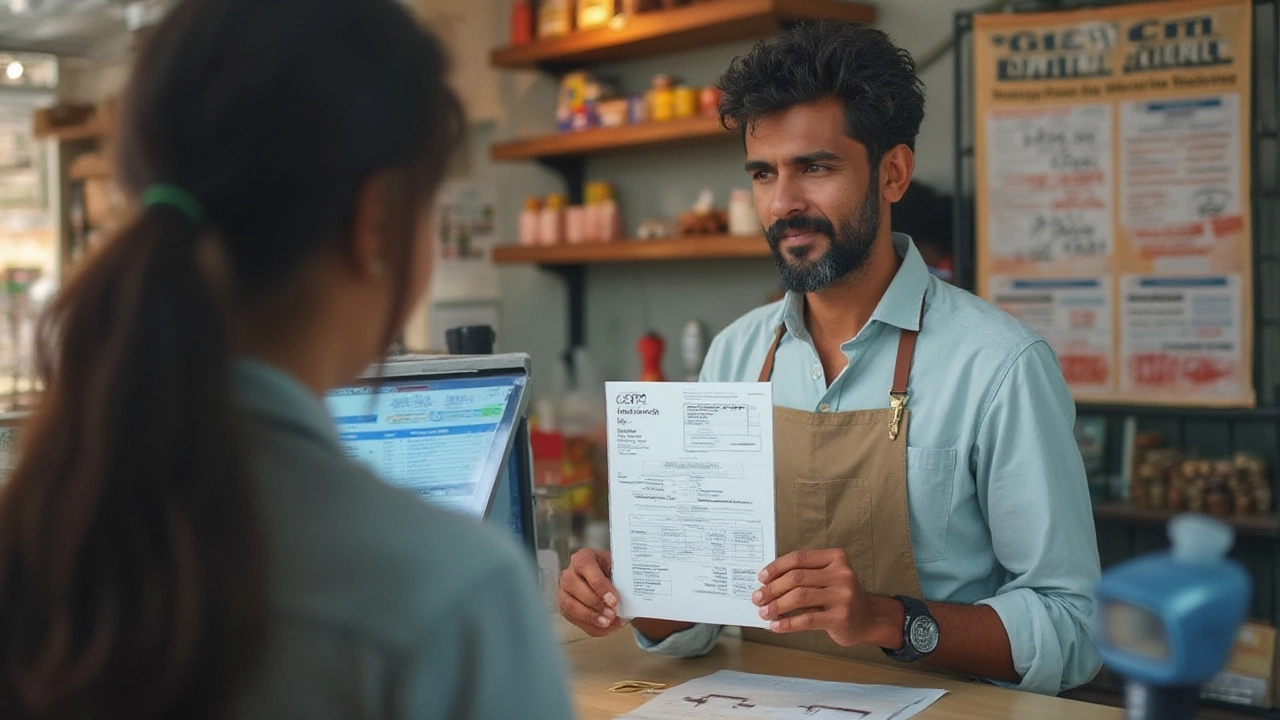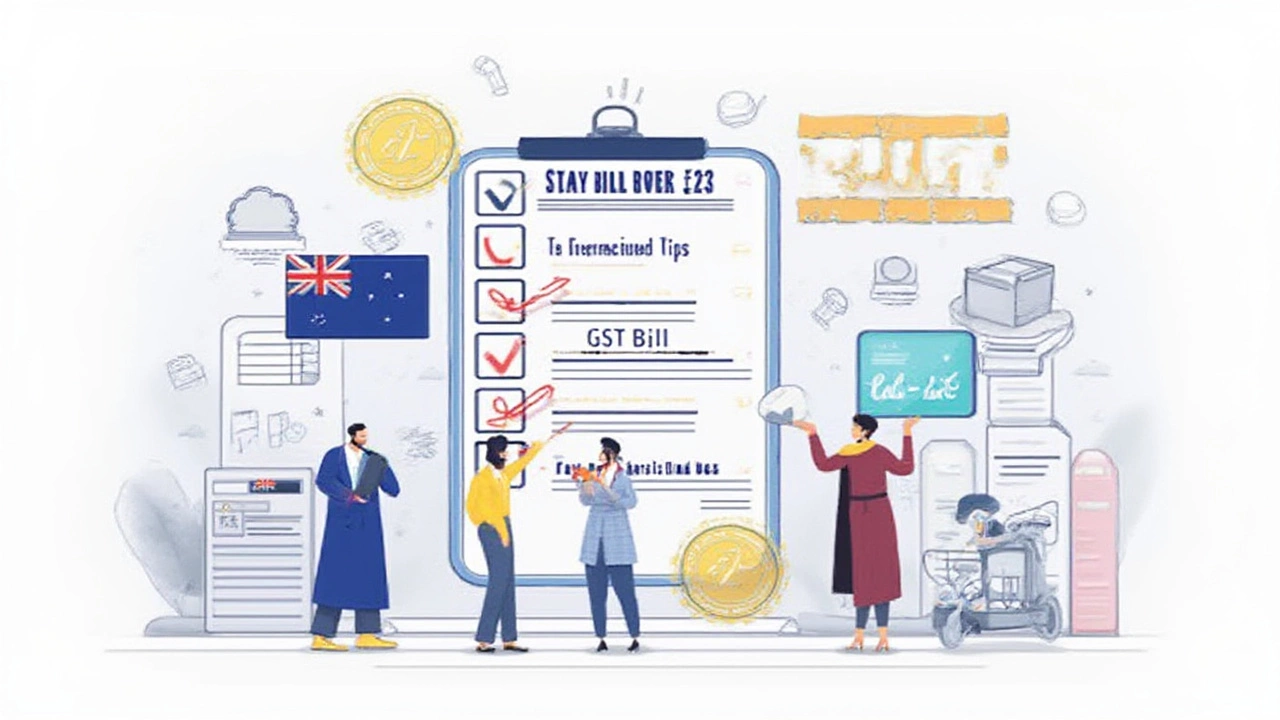Picture this: you grab a flat white at a local café and, out of habit, ask for a tax invoice. The waitress hesitates, glances at the register, and then hands you a simple EFTPOS slip, making you wonder if this is enough for your tax records. A lot of Aussies and business owners get tangled up in the maze of GST paperwork. Is a GST bill actually mandatory for every transaction, or can you get by with something less? If you run a business, you’ve probably been grilled by customers, clients, or even the ATO about proper invoicing. No wonder! Australia’s tax rules aren’t exactly known for simplicity.
Understanding GST Bills and Tax Invoices in Australia
The idea of a GST bill throws a lot of people off. When someone says “GST bill,” they usually mean a tax invoice that shows the 10% Goods and Services Tax included in the price. But does the law require this? Under the Australian tax system, GST is a broad-based consumption tax added to most goods and services at the point of sale. If you’re registered for GST—and here’s the clincher—you are required to issue tax invoices for sales over $82.50 (GST-inclusive).
A lot of confusion comes from mixing up receipts, invoices, and tax invoices. So, what’s the difference? A regular receipt just proves a transaction happened. A tax invoice, on the other hand, has very specific requirements: it shows the seller’s ABN, the date, a description of goods or services sold, the amount of GST included, and clearly labels itself as a tax invoice. In other words, if you’re a GST-registered business, you must provide a tax invoice if your customer asks for one (for sales over $82.50). Otherwise, your customer can’t claim GST credits. That’s a key pain point for many small businesses whose clients—like contractors, tradies, or other businesses—want to claim back the GST they’ve paid. If you don’t provide the correct document, they’re out of luck, and you could risk fines.
Here’s a little-known fact: for sales under $82.50, you’re not required to provide a tax invoice unless your customer asks for one. And in many cases, a simple receipt will do. But the minute that amount hits or exceeds $82.50, the rules change. Got a customer insisting on a GST bill for a $5 coffee? Legally, you only need to issue a full tax invoice if they request it for larger purchases. But for big-ticket items, the ATO expects businesses to get it right. Direct from the source, the ATO says:
"Businesses registered for GST must issue a tax invoice for sales of taxable goods and services that are more than $82.50 (including GST), if asked by the buyer."So if you’re not GST-registered, you can’t issue a tax invoice, full stop. In fact, if you try to, you’re breaking the law.
Here's the kicker—many businesses just print receipts and call it a day, not realizing that without the required fields, they’re not compliant. There have been cases where businesses got audited and were hit with penalties simply for not providing proper tax invoices, not for dodging any actual tax. This isn’t just busywork; it matters.

Why GST Compliance Actually Matters—and the Risk of Getting It Wrong
The Australian Tax Office (ATO) doesn’t play around when it comes to GST compliance. Skimping on GST bills (tax invoices) can wreck a business during an audit. Think about it—one missing tax invoice can stop a client from claiming GST credits, and if the ATO finds a pattern, it opens the floodgates for bigger problems. A 2023 ATO audit reported that nearly $1.7 billion in GST credits were incorrectly claimed, and a big chunk came from invalid or missing tax invoices. That’s not small change.
If you’re running a business, GST compliance should be at the top of your list. Getting sloppy or making assumptions could cost you more than late-night paperwork. Why? Because if the ATO decides your invoices don’t meet the standard, you can face fines of up to $6,600 per breach and, in extreme cases, criminal charges. All for what? A missing “tax invoice” label, a forgotten ABN, or not splitting out the GST. These aren’t gotchas—they’re things any stressed-out café owner or builder could miss if they aren’t careful.
You might think, "I only sell to everyday punters—why would it matter?" Well, it starts mattering when your clients are other businesses. They’ll chase you for a valid tax invoice to get those GST credits. No proper paperwork? You risk losing clients, getting reported to the ATO, or both. Then there are government contracts, which won’t pay up without a valid tax invoice. In short, it’s a business killer if you don’t sort it.
Ever heard the urban legend that printing the word "tax invoice" in bold is enough? It’s not. Your invoice needs the correct ABN, full name, date, an itemized description, the total price including GST, and an actual GST component (if there is one). If the total exceeds $1,000, it must also include the buyer’s details. Sounds like a lot, but plenty of cloud-based invoicing tools now automate this. Still, it pays to know exactly what’s required so you can double-check. For businesses using old-school pads or DIY Excel templates, cross-check your docs with ATO’s sample tax invoice.
A lot of businesses shoot themselves in the foot by forgetting that only GST-registered entities can issue a tax invoice. If you bill a client with GST (but aren’t registered), you’ll be responsible for remitting GST to the ATO anyway, even though you weren’t legally collecting it. That’s a nightmare to fix, especially for sole traders and small businesses.
GST compliance, at the ground level, is about trust. The system relies on people doing the right thing—proper records, correct invoices, zero shortcuts. Don’t forget: your competitors will happily point out your slip-ups to the ATO if it puts them ahead or blows up a deal. The government keeps raising the bar, using data-matching and AI to trawl through small business records more aggressively. As of 2024, the ATO’s digital capabilities have made random audits more common—and quicker. Don’t assume you’re flying under the radar just because you’re not turning over millions.
You’re not alone if you feel overwhelmed. Even the ATO’s help pages get updated every few months as businesses find new ways to make mistakes. Here’s a quick checklist to keep things straight:
- GST bill is just slang for a tax invoice—make sure you know the difference between a receipt and a tax invoice.
- Only issue a tax invoice if you’re registered for GST (otherwise, just give a receipt).
- For transactions over $82.50 (including GST), a tax invoice is a must if asked (for transactions under this, only if requested).
- Make sure your ABN, the date, description, GST amount, total, and the words "tax invoice" are all there.
- For sales over $1,000, add the buyer’s details too.
- For more complex cases, especially exports, mixed supplies, or government contracts, consult a tax agent.

Common Mistakes, Tips, and How to Handle GST Invoices Like a Pro in 2025
So, how do you become bulletproof on GST compliance this year? The simplest trick is to not think of GST record-keeping as just an annoying chore, but as an essential part of running your business like a pro. With more businesses moving online, the need for clear digital paperwork has exploded. The ATO’s e-invoicing push also means that paper receipts are going out of fashion fast.
Here are some classic mistakes Aussie businesses still make in 2025:
- Issuing tax invoices without being GST registered (big red flag!).
- Leaving out core details—like missing your ABN or forgetting to split GST from the total.
- Handwriting invoices that are hard to read or easily lost.
- Using outdated templates that don’t match ATO requirements.
If you’ve made these goofs in the past, don’t panic. Fix it fast—issue corrected invoices to your clients and update your bookkeeping. Most clients will appreciate your transparency.
The best tip? Use accounting software approved for e-invoicing, like Xero, MYOB, or QuickBooks Australia. These platforms prompt you to include everything needed, let you email tax invoices instantly, and even track whether your invoice was read. If you’re a sole trader or micro business, free options like Wave or the ATO’s own sample templates make compliance achievable without extra cost.
You’re probably wondering—do you need to keep hard copies? The short answer is: not if you keep digital records. The ATO has accepted digital records for years, as long as they are easily retrievable and unaltered. That means snapping a mobile photo of a tax invoice is fine, as long as you back it up. Cloud storage is your best mate here, and there’s no reason to drown in shoeboxes of receipts by tax time.
One more practical tip: If your customer wants a tax invoice for a split payment (say, $100 paid with cash and $50 with card), issue a single tax invoice showing the total and payment methods. Don’t break it up into multiple invoices—that’s where errors sneak in and compliance stumbles.
Finally, if you find yourself on the receiving end—maybe you’re a tradie or freelancer and you aren’t given a valid tax invoice by a supplier—don’t just accept it. Push for it. You can’t claim GST credits on invalid documentation, and the ATO won’t budge on this, even for honest mistakes. As the ATO puts it:
"If you do not receive a valid tax invoice for a taxable purchase costing more than $82.50, you generally cannot claim the GST credit."So, speak up for your own records, not just theirs.
Here’s something else to remember in 2025: With more Aussies running side hustles or freelancing, you might be unsure if you need to register for GST in the first place. The magic number is $75,000 in annual turnover. The moment your turnover hits that, you must register within 21 days and start issuing tax invoices for relevant sales. Waiting too long could land you a hefty penalty, and you’ll need to back-date your GST—and sort out your tax invoices retroactively, which is a massive headache.
The bottom line? The rules haven’t changed dramatically, but the ATO’s tech and data-matching certainly have. The onus is on you to keep records tidy, issue proper documents, and treat your tax paperwork as carefully as you’d nurture your best customers. Run your business as if the ATO will pop by for a chat any day—and you’ll sleep a whole lot better come June 30.


